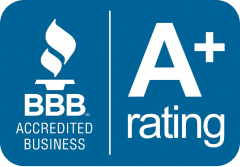Key Takeaways
- Medicaid is a type of health insurance available to those with low earnings. It is distinct from Medicare, which provides health coverage to individuals 65 and older and some people with disabilities.
- If they meet the requirements set forth by their state, people with Medicare may also be eligible for Medicaid.
- A specific group of Medicaid benefits that assist in covering the expenses of Medicare is known as the Medicare Savings Program.
What is Medicaid?
For those with limited resources and money, Medicaid is a state-run health insurance program that covers a wide range of medical treatments. Medicaid is a state-run program, therefore eligibility requirements and additional program benefits may differ from state to state. Doctor visits, hospital inpatient and outpatient care, lab tests, x-rays, medical transportation, family planning services, nursing facility care, home health care, and nurse practitioner services are all considered basic services. The federally sponsored Medicare Savings Programs are also managed by Medicaid.
Medicaid vs. Medicare
Medicare and Medicaid are different. For those 65 and over, Medicare is the federal health insurance program. A few disabled individuals may also be able to sign up for Medicare. Can someone have both Medicare and Medicaid?
If they meet the requirements set forth by their state, people with Medicare may also be eligible for Medicaid. They are frequently referred to as “dual eligibles” or “duals.” Medicaid can cover Medicare co-payments and deductibles and treatments not covered by Medicare that may be available in your state’s Medicaid program, such as vision, hearing, and dental care.
Medicaid is no longer the main source of funding for those with Medicare enrollment for their prescription medications. Medicare Part D will assist those with Medicaid and Medicare in covering their pharmaceutical costs. Medicaid may provide coverage for specific medications that Medicare does not in some states. Additionally, Medicare Part D Low Income Subsidy (LIS/Extra Help) eligibility is automatic for individuals who are enrolled in both Medicaid and Medicare.
What are the 4 Medicare Savings Programs?
Medicaid-managed programs called Medicare Savings Programs (MSPs) are available to Medicare beneficiaries with low incomes and resources. These initiatives aid those who can pay for Medicare. There are four distinct Medicare Savings Programs, and each has a different eligibility threshold for resources and income. The 2022 Medicare Savings Program eligibility restrictions are as follows:
1. Qualified Medicare Beneficiary (QMB): Individuals may be eligible if their resources are less than $8,400 for single individuals and $12,600 for married couples and their income is less than 100% of the Federal Poverty Level (FPL). If qualified, QMB will pay the Part A and Part B premiums, deductibles, copayments, and coinsurance associated with Medicare. A $20 general income disregard is included in the monthly income restrictions; Alaska and Hawaii have marginally greater restrictions:
- Residents of 48 states & District of Columbia: $1,153/$1,546 single/married
- Alaska: $1,436/$1,928 single/married
- Hawaii: $1,323/$1,775 single/married
2. Specified Low-Income Beneficiary (SLMB): Seniors and persons with disabilities who earn between 100 and 120% of the federal poverty level and have assets under $8,400 for single people and $12,600 for married people may be eligible. SLMB will, if qualified, pay the Medicare Part B monthly premium ($170.10 in 2022). There is a $20 general income disregard monthly income cap, with somewhat higher income caps for residents of Alaska and Hawaii:
- Residents of 48 states & District of Columbia: $1,379/$1,851 single/married
- Alaska—$1,719/$2,309 single/married
- Hawaii—$1,583/$2,126 single/married
3. Qualifying Individual (QI): A block-grant program with a strict cap on participation, QI is only open to the initial applicants. Those with Medicare may be eligible if their income is between 120 and 135% FPL and their resources are less than $8,400 ($single) and $12,600 ($married) respectively. If qualified, QI will pay the Medicare Part B deductible. A $20 general income disregard is included in the monthly income restrictions; Alaska and Hawaii have marginally greater restrictions:
- Residents of 48 states & District of Columbia: $1,549/$2,080 single/married
- Alaska: $1,931/$2,595 single/married
- Hawaii: $1,778/$2,389 single/married
4. Qualified Disabled Working Individual (QDWI): QDWI refers to adults under 65 who are disabled and who have just started working again and are no longer eligible for premium-free Part A. Their resources must be $4,000 if they are single, $6,000 if they are married, and their income must be at or below 200% FPL. But there are further earned income disregards that increase the QDWI income cap to 400% FPL. When qualified, QDWI will pay the Part A premium. Alaska and Hawaii have slightly higher limitations; monthly income limits include a $20 general income disregard and a $65 earned income disregard:
- Residents of 48 states & District of Columbia: $4,615/$6,188 single/married
- Alaska: $5,748/$7,715 single/married
- Hawaii: $5,295/$7,105 single/married
Note: The upper limits represent federal regulations. Some states might decide to raise these federal guidelines amounts or do away with the combined resource test. Look up the eligibility requirements in your state.
What are the advantages of Medicare Savings Programs?
The Medicare Savings Programs may still be available to seniors and younger persons with disabilities who do not necessarily meet the requirements for full Medicaid coverage. There are two primary benefits of doing this:
- reducing the cost of Medicare. The Medicare Part B premium, which in 2022 will cost $170.10 per month for those who need premium assistance, is covered by three of the four MSPs. Seniors and persons with disabilities who enroll in MSPs get almost $2,000 back each year.
- Automatic Extra Assistance A person is automatically “deemed” eligible for the Medicare Part D Low Income Subsidy (LIS/Extra Help) upon enrollment in MSPs. The Social Security Administration has estimated the value of this benefit, which aids in covering prescription drug costs, at $5,100 per year. Additionally, if a senior or disabled adult receives Extra Help, they will not be subject to a late enrollment fee if they are not enrolled in Part D.
Where can I get help applying for the Medicare Savings Program?
You can seek help: If you think you or someone you know might be qualified for these programs.
- The Benefits Enrollment Centers network of NCOA (BECs). BECs offer assistance to elderly folks and people with disabilities so they can apply for any benefits they might be missing.
- BenefitsCheckUp® is a free online tool that checks for eligibility for thousands of programs, including Medicaid and the MSPs, that can cover the cost of medical treatment, prescription drugs, and other expenses.
- The State Health Insurance Assistance Program in your area (SHIPs). The Medicare Savings Programs and the Part D Low-Income Subsidy/Extra Help are two federally supported programs that SHIPs can help you apply for. Ships also offer free, impartial assistance to persons with Medicare and their families.
I have additional questions about Medicare and need help. Where can I get more information?
Medicare Choice Group (MCG) is a broker that satisfies the NCOA’s Standards of Excellence if you need assistance evaluating your Medicare options. Both SHIPs and MCG are solutions that are dedicated to meeting your Medicare selection priorities and needs without charging you any money. Connect with a certified Medicare enrollment consultant right away to learn more.
FAQS
What does SLMB mean in Medicare?
Specified Low-Income Medicare Beneficiary
Specified Low-Income Medicare Beneficiary (SLMB): Pays only the monthly Medicare Part B premiums. • Qualifying Individual (QI): Pays only the monthly Medicare Part B. premiums. However, money for the QI program is limited.
What are Medicare costs for 2023?
The standard monthly premium for Medicare Part B enrollees will be $164.90 for 2023, a decrease of $5.20 from $170.10 in 2022. The annual deductible for all Medicare Part B beneficiaries is $226 in 2023, a decrease of $7 from the annual deductible of $233 in 2022.
How long are Social Security disability benefits?
We may pay Social Security disability benefits for as many as 12 months before you apply if we find you had a disability during that time and you meet all other requirements. Benefits usually continue until you can work again on a regular basis.
What prescriptions are covered by Medicare?
Part D
Medicare offers prescription drug coverage for everyone with Medicare. This coverage is called “Part D.” There are 2 ways to get Medicare prescription drug coverage: 1. Join a Medicare Prescription Drug Plan (PDP).
What are the 4 types of Medicare Advantage plans?
Below are the most common types of Medicare Advantage Plans.
- Health Maintenance Organization (HMO) Plans.
- Preferred Provider Organization (PPO) Plans.
- Private Fee-for-Service (PFFS) Plans.
- Special Needs Plans (SNPs)
How much are Medicare premiums per month?
In 2023, the premium is either $278 or $506 each month, depending on how long you or your spouse worked and paid Medicare taxes. You also have to sign up for Part B to buy Part A. If you don’t buy Part A when you’re first eligible for Medicare (usually when you turn 65), you might pay a penalty.
What are Medicare deductibles for 2023?
In 2023, the Medicare Part A deductible is $1,600 per benefit period and the Part B annual deductible is $226. The Centers for Medicare & Medicaid Services (CMS) releases new premiums, deductibles, and coinsurance amounts for Part A, Part B, and the Medicare Part D income-related monthly adjustment amounts every fall.








